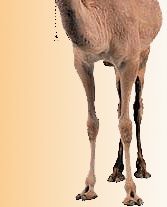Rajasthan Dances
The desert comes alive when the performers take centre stage. Though the ghoomar is a dance that is performed in the privacy of homes, and was once restricted to the zenanas, almost all others are folk forms that are either linked to a particular region, or a particular festival. In recent years, however, these performances have become more widespread, so that the regional distinction is beginning to wear off. Visitors to the state can request specific entertainments, or simply choose to be swept away by the rhythms and nuances of Rajasthan as it celebrates.
Bhavi Dance
One of the state’s mose spectacular performances, it consists of veiled women dancers balancing up to seven or nine brass pitchers as they dance nimbly, pirouetting, and then swaying with the soles of their feet perched on top of a glass, or on the edge of a sword. There is a sense of cutting edge suspense to the performace, and even though some of the hotel performers use only papier mache pots that are stuck together, the feat is still one of amazing dexterity.
Chari Dance
Dancers choreograh deft patterns with their hands while balancing brass pots on their heads. The performance is made more picturesque with the flames from cotton seeds set a alight, so that the bobbing heads create streaks of illuminated patterns as they move effortlessly around the floor.
Drum Dance
Put a naked sword in the mouth of a man, and give him three swords to juggle with his hands while avoiding causing an injury to himself. This to the accompaniment of his troupe that consists of musicians holding aloft drums around their necks and cymbals in their hands. A stirring performance from a martial race.
Fire Dance
If there is divine protection to be offered, the Jasnaiths of Bikaner and Churu must be responsible for cornering most of it. These dancers perform on a large bed of flaming coals, their steps moving to the beat of drums that rises in crescendo till the dancers appear to be in a near hypnotic state. And no,they'ree not likely to have any blisters to show for it. These devotional performances are usually to be seen late on a winter’s night.
Gair Dance
There are several variations to this picturesque dance form that is performed by both men and women. The men wear long, pleated tunics that open out into full-length skirts as they move first in clockwise then in anti-clockwise direction, beating their sticks to create the rhythm when they turn. Originally a Bhil dance, and performed at the time of Holi, its variations are the Dandia Gair in the Marwar region and Geendad in the Shekhawati region.
Ghoomar Dance
A community dance of the Rajputs, performed by the women of the house and traditionally out of bounds for men, it uses simple, swaying movements to convey the spirit of any auspiciousoccassionn. There is, however, an amazing grace as the skirts flare slowly while the women twirl in circles, their faces covered by the veil. Traditionally, all women, whether old or young, participate in the dance, which can continue for hours into the night. A new bride, on being welcomed to the home of her husband, too is expected to dance the ghoomar as one of the rituals of the new marriage.
Kachhi Ghodi Dance
Originated from the bandit regions of Shekhawati, the dance is performed for the entertainment of a bridge groom’s party. Dancers wear elaborate costumes that resemble them riding on horses. A vigorous dance, it uses mock-fights and the brandishing of swords, nimble sidestepping and pirouetting to the music of fifes and drums. A ballad singer usually sings the exploits of the bandit Robin Hoods.
Kathak Dance
This formal, classical dance evolved as a gharana in the courts of Jaipur where it reached a scale that established it as distinct from the other centre of Kathak, Lucknow in Uttar Pradesh. Even today, the Jaipur gharana is well established, though performances occur in other centres rather than in the state where the opportunity for classical dance forms has been on the decline for a while.
Kathputli Dance
A tradition of puppeteering has long existed in Rajasthan. A travelling form of entertainment, it uses the ballads, retold in the voice of the puppeteer who is assisted by his family in erecting a make-shift stage. Puppets are strung on the stage and recount historic anecdotes, replay tales of love, and include much screeching and high-pitched sounds as the puppets twirl and move frenetically.
Sapera Dance
One of the most sensuous dance forms of Rajasthan, performed by the Kalbeliya snake-charmer’s community, the sapera dancers wear long, black skirts embroidered with silver ribbons. As they spin in a circle, their body always acrobatically, so that it is impossible to believe that they are made of anything other than rubber. As the beat increases to such a pitch that it leaves the viewer as exhausted as the dancer.
Terah Talli Dance
Another devotional form of dance practiced by theee Kamad community of Pokhran and Deedwana, to honour their folk hero, Baba Ramdeo, it consists of women sitting on the floor before his image. Tied to various parts of their body are thirteen cymbals which they strike with the ones they hold in their hand. Their hands perform various arabesques while they do this, and for effect, they may also balance pots on their hands and hold a sword in their mouth.
|
|




